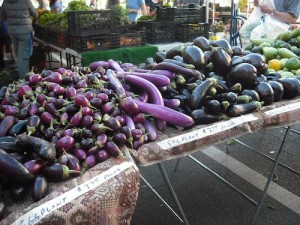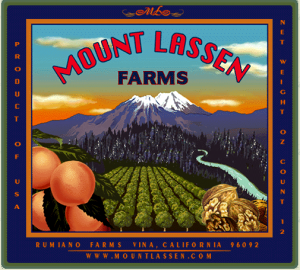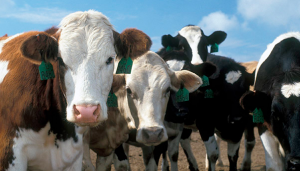In America, the topic of food is at its zenith. The Food Network channel saw its highest ratings ever in January 2010; Food Network magazine came in at number 5 on the Ad Age magazine “A List;” and films like Food Inc. have scored big, both in opening weekends and in opening the minds of consumers.
But while food is its own celebrity and Americans are increasingly interested in bringing local to the table, many Americans still know nothing about where and how their food is grown. For most people, marketing has become a matter of trust.
Many are putting their faith in local farmers markets. Jane Black at The Washington Post reports that “the number of farmers markets jumped 16 percent in 2010”.  Organizations such as Farm to Table and American Farmland Trust are encouraging the trend, serving to promote local farms and consumer education. But the emphasis for these organizations is only on local; consumers may be surprised to know that both small family farms and large, commercial endeavors are given a seat at the table.
Organizations such as Farm to Table and American Farmland Trust are encouraging the trend, serving to promote local farms and consumer education. But the emphasis for these organizations is only on local; consumers may be surprised to know that both small family farms and large, commercial endeavors are given a seat at the table.
Is Small Always Good? Is Big Always Bad?
If Americans are in the dark about how their meal went from seed to market and under what conditions, then the Powers That Be – the ones dictating things like food certification – are completely cloistered in secrecy.  With the farmer’s market trend spreading throughout the country with increased momentum, unscrupulous individuals are finding ways to cash in, and the cloudy oversight does little to help the cause. Farmer’s markets – once seen as the Bastion of Responsible Eating – are now the subject of undercover investigations: Rows of gorgeous, gleaming produce thought to be brought in from nearby farms are discovered to be Hecho en Mexico. Berries labeled “pesticide free” return test results that would shock even the most juiced ball player. And some of this is from stalls that carry USDA certification. Many other farmers can’t afford the expensive documentation, merely stating they conform to “organic standards,” but lack the third-party paperwork to back the claims.
With the farmer’s market trend spreading throughout the country with increased momentum, unscrupulous individuals are finding ways to cash in, and the cloudy oversight does little to help the cause. Farmer’s markets – once seen as the Bastion of Responsible Eating – are now the subject of undercover investigations: Rows of gorgeous, gleaming produce thought to be brought in from nearby farms are discovered to be Hecho en Mexico. Berries labeled “pesticide free” return test results that would shock even the most juiced ball player. And some of this is from stalls that carry USDA certification. Many other farmers can’t afford the expensive documentation, merely stating they conform to “organic standards,” but lack the third-party paperwork to back the claims.
Some farmer’s market managers, like Mark Anderson, from the Playa Vista farmer’s market in Playa Vista, CA insist that he and most of his colleagues do their homework before a vendor is allowed to sell at their market. There is a standard protocol of applications and certification. Paperwork is completed and the farmer’s Certified Producers Certificate is inspected. After that, Anderson says, “you look at the products [the farmers] are certified to sell, how much acreage they’re reporting, their harvest season, estimated produce, etc. If it doesn’t add up, you start asking more questions.”
Most market managers actually visit their vendor’s farms. But Anderson admits that when farmers claim their produce is pesticide-free, you have to “trust that what they’re saying is true.”
To make matters worse, there seems to be a disconnect for most Americans between what they’re buying and what they think they’re getting – even when the merchant is upholding their part of the bargain. For example, American Farmland Trust launches their inaugural “Dine Out For Farms” week from October 10 – 16, but restaurant participation is merely donation-based. A percentage of the proceeds go toward funding AFT’s programs, but as long as an eatery pays to play, they may take part in the promotion – even if their eggs are trucked in from a warehouse 1,000 miles away.
Many consumers face similar confusion from organizations like Farm to Table. According to Khaled Allen, editor in chief of Farm to Table’s blog, “most of it is pushing the local food aspect. Not necessarily organic or sustainable, either,” although he quickly follows that, “most people would argue local is sustainable.” Most people, maybe, but certainly not all. Like American Farmland Trust, Farm to Table is willing to work with any farm – no matter the size or philosophy – as long as they sell locally.
Natural vs. Naturally Raised: A Big Difference
Terminology doesn’t get any simpler when we put meat on the table. According to Animal Welfare Institute, a third-party policing organization that tracks animals in industry and seeks to end the cruel conditions in which many of them live, “Only two percent of more than 2,000 Americans responding to a Harris Interactive Poll* conducted for the Animal Welfare Institute were able to correctly identify the definition of ‘natural’ when used on meat and poultry. Fifty-one percent mistakenly thought ‘natural’ meant the product came from animals who were not administered hormones or antibiotics. Seventy-one percent of the sample strongly or somewhat agreed that having both a ‘natural’ and a ‘naturally-raised’ label, where the labels have different meanings, could be confusing to consumers.”
Food for Thought
So how is the average American supposed to shop without losing his mind? The good news is there is some light to help illuminate the murky, complicated path to dinner. For its part, AWI has created standards for poultry, beef, dairy cattle, and pork concerning branding, castration and confinement that go way beyond USDA organic regulation, and AWI isn’t alone. Global Animal Partnership has created a 5-Step Animal Welfare Rating program. Humane Farm Animal Care has clear, consumer-friendly labels on meat coming from animals that have been raised with their Certified Humane standard of care. Global Organic Alliance, Food Alliance/International Certification Services, Inc. Guaranteed Organic Certification Agency, Quality Certification Services, Certified Organic, Inc are other third-party certification organizations that adhere to strict guidelines that go way beyond the USDA.
Are these products available at the farmer’s market? Sometimes. But, whether a chef or a home cook, the important thing to remember about farmer’s markets is that the emphasis is only on local. From there, individuals need to get to know the farmers. Visit their farm, understand their philosophy. The local movement is about bringing food home to the community, so gather with neighbors who have a similar philosophy and form a culinary “neighborhood watch.” Food may be the new movie star, but in this day when anything can have its own 15 minutes of fame, it’s up to individuals to decide which greens get the green light in their kitchen.
* Natural labeling poll, Harris Interactive QuickQuery for the Animal Welfare Institute, October 2009


An engrossing, gastronomic read!